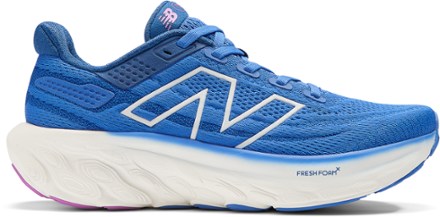7 reasons why I’m finally an electric bike believer
Not a trace of doubt in my mind

It’s easy to dislike new things, especially when that new thing tends to be pricier, heavier and dorkier looking than a cherished old thing. I’m speaking about electric bikes, of course. As an avid cyclist since my diaper days, I’ve been hooked on the feeling of cruising around on a bicycle for as far back as my memory goes.
When ebikes started popping up in my purview ten years ago, or so, I initially paid them little mind. After all, ebikes are an incredibly eco-friendly alternative to motor vehicles, and living in a congested city like Seattle, I’m down for anything that reduces urban car culture.
But then ebike numbers started to grow and soon, everyone from floppy-haired preteens to salt-and-pepper retirees began blasting by me at Mach speed — bike racks became jam-packed with bulky, unsightly ebikes, as did popular biking trails. And, so, my attitude shifted from that of an open-minded, fresh-faced college boy to one of a crotchety recluse, ready to shake my proverbial cane at all ebikers in passing.
That was the old me, though. People can change. These days, I’ve come around to the motor-assisted lifestyle. In fact, I’m considering upgrading to one of the best electric bikes soon. Here are seven reasons why I’m finally an electric bike believer.
1. You can still get a workout…if you want to

The old me would scoff at ebike riders zipping by as I huffed and puffed up steep inclines. "Get a real bike!" I'd shout in my head. But now I know better than to judge. Sure, you can cruise around on an ebike with minimal physical exertion. That doesn't mean you have to.
I find that for longer rides, in particular, it's often necessary to conserve battery power for the tail end when I'm really tired. When riding the Verve+ 1 Lowstep LT, for instance, I like to keep the e-assist on at its lowest setting for all but the steepest hills, which coincidentally is how I end most rides (I live on a hill). This means I'm still doing plenty of pedaling and getting my heart rate decently elevated.
So, yes, you can definitely still get a solid workout on an ebike. On a recent 15.6-mile ride, for example, I burned 878 calories, according to the Garmin Forerunner 165. My average heart rate for that ride, 146 bpm, was also not too dissimilar to my average for similar rides on a standard bike.
Sign up to get the BEST of Tom's Guide direct to your inbox.
Get instant access to breaking news, the hottest reviews, great deals and helpful tips.
Ride1Up Roadster V2: was $1095 now $795
The Ride1Up Roadster V2 is the best budget electric bike on the market. It has a range of 20 to 30 miles and a max motor-assisted speed of 24 MPH. Reasonably lightweight, the V2 looks like a standard commuter bike, despite its zippy e-assisted disposition.
Verve+ 1 Lowstep LT: $2299
The Verve+ 1 Lowstep LT is an electric-assist bike with up to 35+ miles of range. Maxing out at 20 MPH with full motor power, it has plenty of pep in its step for joy rides or booking it up hills. High handlebars and large tires make for a comfy ride, whether on pavement or rougher terrain, and an integrated rear rack makes carrying cargo a breeze.
2. Prices are coming down
It's easy to assume that electric-assisted bikes cost a pretty penny. But the entry-level market, which I'm classifying as any bike under or around $1000, has really started to blossom.
A quick trip to our best electric bikes buying guide reveals several excellent options in the $1k neighborhood, including the Ride1Up Roadster V2, the Ride1Up Turris and the Juiced Ripracer, which looks like an absolute blast to whip around on.
3. Range is adequate, even on the entry-level
Speaking of entry-level, battery life on bikes like the Roadster V2 and the Juiced Ripracer is respectable. The former gets between 20 and 30 miles per charge, depending on how much e-assist you use, and the latter 55 miles. Higher-end options, like the $1700 Rad Power RadCity 5 Plus also sport batteries with ranges of 55 miles and upwards.
It's worth noting that most entry-level ebikes don't offer swappable batteries. So, you'll likely need to shell out extra dough for that feature. Fortunately...

4. Batteries recharge quickly
Modern ebike batteries charge pretty quickly. I was pleased to discover that the Trek Verve+'s internal battery can be juiced up to 100% in roughly two hours. The Roadster V2 takes a little longer, between two and four hours.
Still, this means that if I run out of juice while on a cycling adventure, I can pop into the nearest coffee shop or pub, down a beverage or two while my bike charges up, and be on my merry way.
5. They're heavy but not too heavy
Weight and bulk are both major reasons why I've been hesitant to own an ebike. Living in an apartment with several sets of stairs to navigate doesn't exactly vibe with owning a 77-pound bike.
However, there are a handful of reasonably-priced, light-ish ebikes out there. You'll find lighter options in carbon fiber, of course, but those models start at several grand. Not to worry, the Roadster V2 is just 33 pounds and the Trek Verve+ is 43 pounds. While both vastly outweigh my standard commuter bike, the heft is manageable.
6. Faster than a car in congested cities
In congested urban environments, ebikes offer an entertaining and environmentally friendly alternative to commuting by car. They can also get you from point A to point B — assuming your city has adequate bike infrastructure — often faster than motor vehicles.
In Seattle, I'm easily able to avoid the crushing agony of rush hour traffic thanks to well-placed bike lanes and trails. Destinations that might otherwise take me 45 minutes to get to via car instead take me 15 or 20 minutes.
7. They're pure fun

Ultimately, the reason I got into biking in the first place is because it's fun. Who would've guessed that adding a small motor to a bike could make it even more enjoyable? But it surely does.
Beyond the thrill of cruising around town like a bat out of hell, electric bikes also have the benefit of unlocking new adventures. Destinations I may have previously avoided biking to due to distance or incline are now suddenly within reach.
Bottom line: I'm an ebike believer
This marks just the start of my electric bike journey. And I can't wait to see where it takes me: I mentioned shopping for an ebike in the intro, and I'm eager to explore all of the options out there.
I'll be sure to keep you updated as I test out different models and get a sense of which brands and styles are best. Until then, happy riding!
More from Tom's Guide
- I’ve biked 50+ miles in the new Abus GameChanger 2.0 and it’s now my favorite helmet
- Ebike riders aren’t wearing helmets — and head trauma cases are through the roof
- How to waterproof a jacket like the pros — and never get soaked again

Dan Bracaglia is the Tom’s Guide editorial lead for all things smartwatches, fitness trackers and outdoor gear. With 15 years of experience as a consumer technology journalist testing everything from Oura Rings to instant cameras, Dan is deeply passionate about helping readers save money and make informed purchasing decisions. In the past year alone, Dan has assessed major product releases from the likes of Apple, Garmin, Google, Samsung, Polar and many others.
An avid outdoor adventurer, Dan is based in the U.S. Pacific Northwest where he takes advantage of the beautiful surroundings every chance he gets. A lover of kayaking, hiking, swimming, biking, snowboarding and exploring, he also makes every effort to combine his day job with his passions. When not assessing the sleep tracking and heart rate accuracy of the latest tach gadgets, you can find him photographing Seattle’s vibrant underground music community.
-
nick G2 Mock speed? Physical excursions? Peddling? Is proofreading an article you dictated to your phone too much to ask?Reply -
jfbramfeld I have been riding electric bikes for about 6 years now. I agree with most of what you say. I would add that these much too heavy bikes need at least 50 watts of assist to get them even with a cheap road bike for pedalling effort. That corresponds to the lowest level of assist for the three e-bikes I've had. I don't hesitate to add assist for uphill, upwind and soft ground travel, of which I encounter plenty. Even so, I can travel 30 miles on my current Rad without going below 3 of 5 bars. That's about half charge. I have zero range anxiety and my butt gives out way before my legs and battery.Reply
I like to travel trails away from home on occasion , which means putting them in a vehicle. If the bike doesn't fold that means a carrier, which is a pain in the neck. Not that putting a 75 pound folded bike in a cargo area or trunk is any fun. -
CoachellaRider I firmly believe e-bikes will represent 20% of the vehicles on the road in ten years (if not sooner.) The main driver will be economic rather than environmental or health benefits. When a new college grad starting their first job with a 20 mile commute can either buy a junkie car for tens of thousands of dollars, or spend 1K on an e-bike, it's not hard to see that many of them will opt for the bike.Reply
It becomes even more obvious when that same new college grad has to decide between car ownership or home ownership. E-Bikes just make sense.











